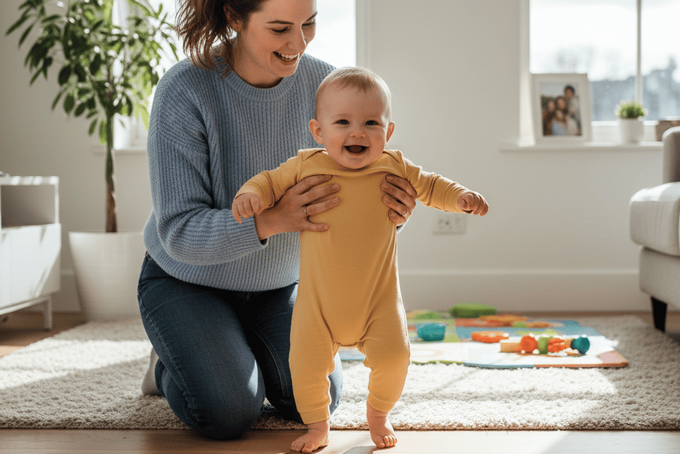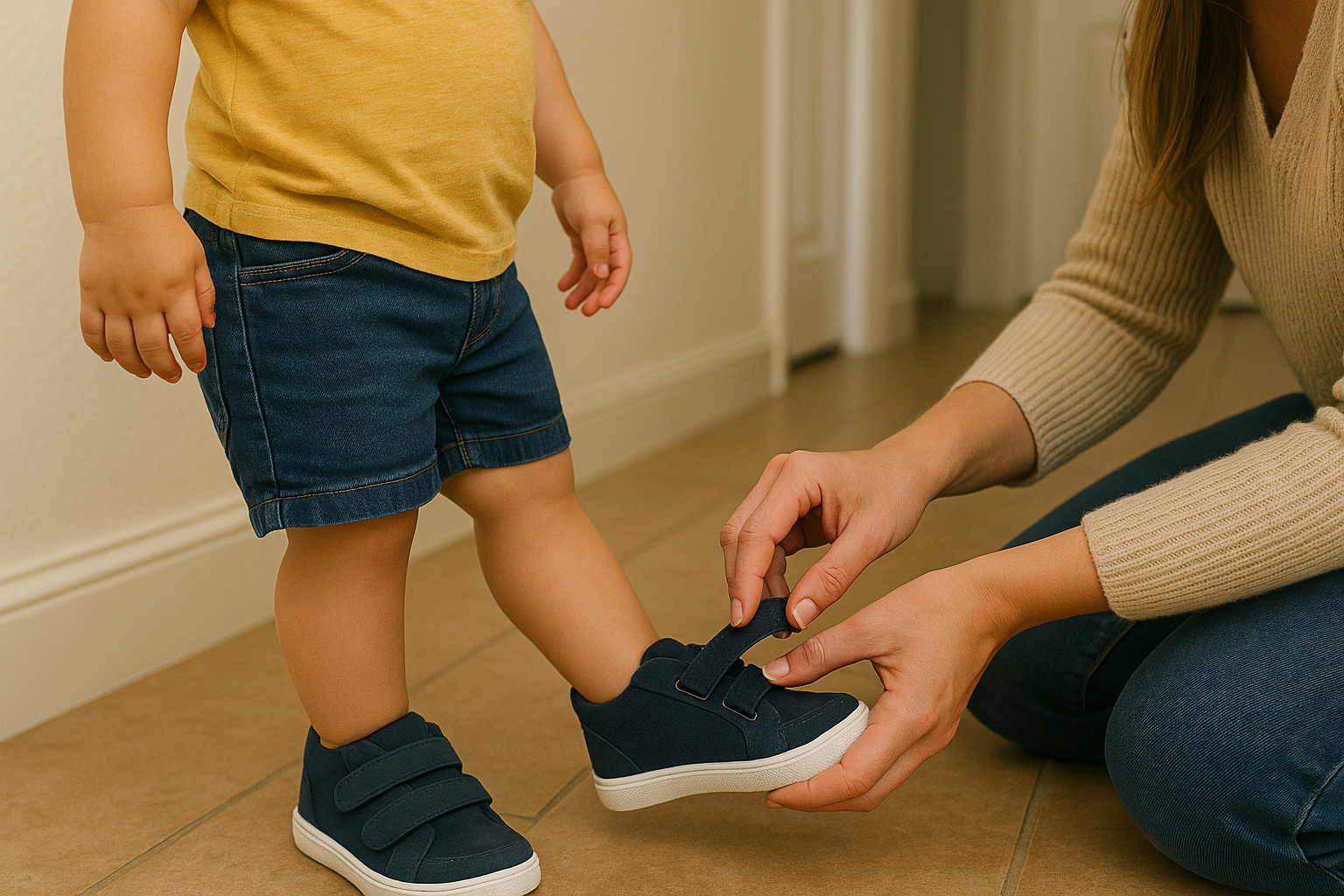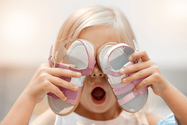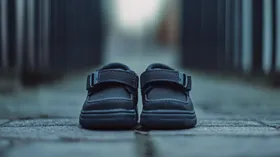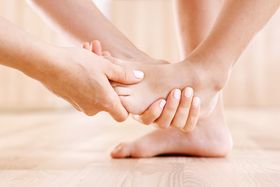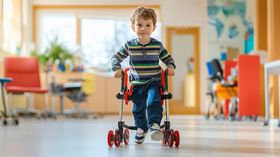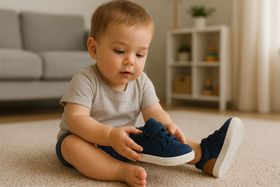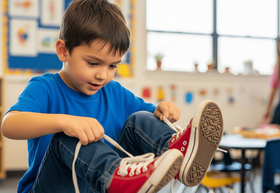Common Reasons a Baby's Foot Turns Out and What Parents Should Know
Out-toeing, when a baby's foot turns outward during walking, is common and often resolves naturally as muscles strengthen and bones develop. Most cases resolve naturally, though some require monitoring or treatment if linked to hip or neurological conditions.
Published October 28, 2025

As a parent, you watch your baby's feet carefully as they go through their milestones, and sometimes you may notice one or both feet seem to point outward instead of straight ahead. You'll wonder if this is normal or if something's wrong.
Out-toeing is quite common in babies learning to walk, and most cases resolve on their own as your child grows stronger.
Let's explore what causes a baby's foot to turn out when walking, when it's simply part of normal development milestones, and when you should talk to your pediatrician.
Why Babies Feet Turn Out When Walking
Out-toeing means your baby's foot or feet point outward rather than straight ahead during walking. You might hear this called a "duck-footed" gait. It's the opposite of in-toeing, where feet point inward, and different from toe walking.
This walking pattern can affect one foot or both feet, and the cause often differs depending on which pattern you're seeing. When only one foot turns out, it usually points to something specific affecting that side. When both feet turn outward, it's more likely related to overall development or how bones are positioned.
The important thing to understand is that babies' bones, muscles, and joints are still developing. What looks unusual now might simply be part of their growth process.
However, knowing the difference between normal development and something requiring attention helps you make informed decisions about your baby's care.
Why Your Baby's One Foot Turns Out
It's important to remember that most issues with your little one's feet or walking will resolve naturally over time, but in certain rare cases, certain issues can affect the way your little one walks:
1. Hip Conditions Affecting Foot Position
When a baby walks with one foot turned out, hip conditions are occasionally the cause, though they're less common than simple developmental patterns. Conditions like developmental hip dysplasia or Perthes disease can cause the affected leg to rotate outward [1].
Your baby's body compensates by rotating the leg outward to minimize discomfort in the hip joint. Beyond the out-toeing, you might notice your child limping, complaining of hip or groin pain, or one leg appearing shorter than the other.
Early detection matters. If you notice persistent one-sided out-toeing combined with limping or pain, schedule an evaluation with your pediatrician.
Treatment varies from physical therapy and specialized braces to surgical correction in more severe cases, depending on your child's specific condition and age.
2. Cerebral Palsy and Muscle Control
Cerebral palsy affects how the brain controls muscles, and out-toeing can be one sign. The foot turns outward due to muscle imbalances—some muscles are too tight while others are too weak to maintain proper leg alignment.
Children with cerebral palsy and out-toeing often show other movement differences like muscle stiffness or floppiness, delayed motor milestones, or difficulty with balance during play.
Treatment focuses on improving muscle balance through physical therapy. Stretching tight muscles and strengthening weak ones supports better walking patterns. Braces or orthotics may help maintain proper alignment while your child's muscles develop better control.
Early intervention through consistent physical therapy makes a significant difference in movement development.
3. Positioning From the Womb
Sometimes a baby's foot can turn outward simply from how your baby was positioned before birth. The hip or shin bone may have been rotated outward in the cramped uterus, especially in breech presentations or twin pregnancies.
This positional out-toeing is typically flexible, you can gently guide the foot to a straighter position without resistance. These babies show normal development in all other ways, reaching motor milestones on time without pain or limping.
The encouraging news is that positional out-toeing usually resolves naturally as your baby gains strength and spends more time moving. Encourage plenty of floor time for crawling and playing.
Expert Note: Most positional out-toeing corrects itself within the first year or two of walking. If the out-toeing persists beyond age 2-3 or seems to be getting worse, mention it at your next pediatric visit.
When Both of Your Baby's Feet Turn Out
1. Femoral Retroversion
Femoral retroversion means both thigh bones are rotated backward at the hip joint, causing both feet to point outward in a "duck-footed" appearance. This is typically just a variation in how bones develop [2].
Both feet point outward symmetrically, and you'll notice the knees also face outward. Your child might prefer sitting in a "frog" position with knees bent and feet apart. Also, the outer edges of both shoes may wear down faster than normal.
You'll need to encourage activities that promote balanced hip movement, like crawling games, obstacle courses, and varied play in different directions.
Expert Note: Most children with femoral retroversion improve naturally with growth and physical therapy focusing on hip strengthening. Only if it persists with functional problems into later childhood would surgical correction be considered.
2. External Tibial Torsion
External tibial torsion happens when both shin bones are rotated outward. The twist happens in the lower leg rather than at the hip [3].
This condition often runs in families and develops as bones grow. You might notice your child trips more often when running or making quick turns, and the outer edges of both shoes show excessive wear.
You will need to promote balanced movement during play and encourage barefoot walking on safe surfaces like grass or carpet, and simple exercises to correct toe walking.
The good news is that external tibial torsion often improves naturally as your child grows. Physical therapy focusing on strengthening and improving balance helps support this natural improvement. Only severe cases causing significant functional problems would need surgical correction.
3. Flexible Flat Feet
Flexible flat feet also contribute to out-toeing when arch muscles are still developing. As the inner arch collapses, the foot flares outward to compensate. This is very common in young children.
You'll notice the flattened arch when your baby is standing or playing. Both feet may roll inward at the ankle while pointing outward at the toes.
Physical therapy focusing on strengthening foot muscles makes a significant difference. Arch support shoes or corrective insoles can help while muscles develop. Encourage exercises for flat feet and barefoot play on varied safe surfaces, this naturally activates arch muscles.
When to Worry About Baby Foot Turning Out
Most cases of babies feet turning out when walking resolves naturally with growth and strengthening. However, certain signs warrant professional evaluation.
- Schedule a pediatric visit if you notice persistent out-toeing in one foot only, especially combined with limping, pain, or one leg appearing shorter.
- Pain in the heel, hip, groin, or knee alongside out-toeing needs evaluation.
- If out-toeing suddenly appears after your baby walked normally before, or if it's getting worse rather than better over time, these changes deserve attention.
- If your child shows other developmental delays, muscle tone differences, or difficulty with coordination beyond just the foot position, mention these concerns to your healthcare provider.
Trust your instincts, you know your baby best, and if something feels off, it's always appropriate to ask for professional assessment.
Family Patterns Causing baby's Foot to Turn Out
If one child in your family has out-toeing, you might wonder about your other children. Siblings do face a higher risk of developing similar patterns, though it's not guaranteed.
This increased risk links to genetic predisposition, certain bone and joint variations run in families. Shared environmental factors also play a role, such as similar activity levels, postural habits, or even footwear choices that can influence leg alignment and walking patterns.
Knowing this family pattern helps you watch for early signs in younger siblings, potentially allowing earlier intervention if needed. However, each child develops uniquely, so having one child with out-toeing doesn't mean all siblings will experience it.
When Out-Toeing in Kids Feet Appears Later
Sometimes a baby who walked normally initially develops out-toeing later. This acquired out-toeing can happen for several reasons and means something different than out-toeing present from the start.
- Injury to the foot, hip, or knee can cause temporary compensatory walking patterns that often resolve once healing occurs. Your child might rotate the leg outward to avoid pain in the injured area.
- Neuromuscular conditions like cerebral palsy or muscular dystrophy can manifest as out-toeing develops. These conditions affect muscle tone and control in ways that change walking patterns over time.
- Effects ill-fitting footwear or inappropriate shoes during growth periods can interfere with normal bone and arch development. Shoes that are too stiff, too flexible, or poorly fitted may contribute to flat feet and subsequent out-toeing.
If your baby's walking pattern changes noticeably, schedule a pediatric evaluation to identify the cause and address it appropriately.
Expert Note on Out-Toeing in Kids Feet
While many cases of baby foot turned outward resolve naturally with growth, it's important to understand that persistent or severe out-toeing can contribute to biomechanical imbalances over time.
These imbalances may result in abnormal wear and tear on the knees, hips, or feet, altered running and walking mechanics, and increased risk of knee pain. Some children develop low back pain due to compensatory posture changes.
This is why assessment should always involve looking at the entire body, from the foot up through the spine, rather than focusing only on the turned-out foot. The way your child's feet hit the ground affects everything above them.
It's also worth noting that the opposite condition, in-toeing (pigeon-toed walking), is common in children and typically results from opposite biomechanical factors compared to out-toeing.
How to Support Your Baby's Foot Development
Whether your baby's out-toeing will resolve on its own or needs intervention, you can support healthy development through daily activities and care choices.
- Provide plenty of supervised floor time for crawling and playing, which naturally strengthens leg and hip muscles.
- Encourage varied movement—don't let your baby always favor one position or movement pattern.
- When your child is ready for shoes, choose supportive options instead of regular shoes with proper arch support and flexible soles that allow natural foot movement.
- Avoid prolonged use of devices like walkers or jumpers that restrict natural leg rotation.
- Monitor progress over time, taking note of whether the out-toeing improves, stays the same, or worsens.
- Keep regular pediatric appointments where development is assessed.
From my years working with families, I've seen that parents who stay observant without becoming overly anxious tend to notice important changes while also allowing normal development to unfold. Balance watchful awareness with trust in your child's natural growth process.
Moving Forward With Confidence
Noticing your baby foot turns out when walking can feel concerning, but remember that most cases are simply part of normal development. Your baby's bones, muscles, and joints are still forming, and what looks unusual now often corrects itself as strength and coordination improve.
The key is knowing when to observe and when to seek evaluation. One-sided out-toeing, out-toeing combined with pain or limping, or patterns that worsen over time deserve professional attention. But bilateral out-toeing that gradually improves, causes no discomfort, and doesn't interfere with your baby's play and exploration is usually just part of their unique developmental journey.
Stay observant, provide supportive orthopaedic footwear and plenty of opportunities for varied movement, and trust both your instincts and your child's remarkable capacity for growth and adaptation. With appropriate attention and care, most babies with out-toeing develop into active, healthy children who move confidently through their world.
References
Subramanian, P., & Soundararajan, R. (n.d.). A comprehensive review of the common developmental disorders of hip – Developmental dysplasia of the hip, slipped capital femoral epiphysis, and Perthes disease. Indian Journal of Musckuloskeletal Radiology. https://mss-ijmsr.com/a-comprehensive-review-of-the-common-developmental-disorders-of-hip-developmental-dysplasia-of-the-hip-slipped-capital-femoral-epiphysis-and-perthes-disease/
Tsagkaris, C., Dreher, T., Zingg, P., & Rüger, M. (2025). Association of femoral retroversion and out-toeing gait with development of hip osteoarthritis and treatment: a systematic review. Acta Orthopaedica, 96. https://doi.org/10.2340/17453674.2025.43475
Stahl, D., MD. (n.d.). External tibial torsion - pediatrics - orthobullets. https://www.orthobullets.com/pediatrics/4121/external-tibial-torsion
Disclaimer: First Walkers' information is intended for educational and informational purposes related to toddler footwear and feet. We encourage you to consider individual circumstances and consult qualified orthopaedists about specific conditions.
FAQs
Is it normal for babies learning to walk to have feet turned out?
Yes, it's common for babies to show some out-toeing when first learning to walk. Their muscles are still developing strength and coordination, and bones are continuing to form. Most cases improve naturally as your baby gains walking experience and muscle control.
What's the difference between out-toeing and flat feet?
Out-toeing refers to feet pointing outward during walking, while flat feet describe collapsed arches on the bottom of the foot. However, flexible flat feet can contribute to out-toeing because the collapsed arch causes the foot to flare outward to compensate.
Can shoes cause my baby's feet to turn out?
Inappropriate or ill-fitting shoes during growth periods can interfere with normal foot development and potentially contribute to out-toeing. Choose supportive shoes with proper arch support and flexible soles that allow natural movement rather than restricting it.
How long does it take for out-toeing to correct itself?
The timeline varies depending on the cause. Positional out-toeing from womb positioning often improves within the first 1-2 years of walking. Developmental causes like external tibial torsion may improve gradually throughout childhood, typically by age 8-10.
